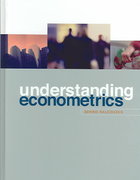Question
Question 2 The case study entitled A NOT-SO-POPULAR NORDIC BRIDGE It was not quite what the planners had in mind when Sweden and Denmark opened
Question 2
The case study entitled "A NOT-SO-POPULAR NORDIC BRIDGE"
It was not quite what the planners had in mind when Sweden and Denmark opened their expensive bridge across the Oresund strait in July. After an early boost from summer tourism, car crossings have fallen sharply, while trains now connecting Copenhagen, the Danish capital, and Malmo, Sweden's third city, are struggling to run on time. Many people think the costs of using the bridge are simply too high. And, from the point of view of Scandinavian solidarity, the traffic is embarrassingly one-sided: far more Swedes are going to Denmark than vice versa. So last week the authorities decided to knock almost 50% off the price of a one-way crossing for the last three months of this year. The two governments, which paid nearly $2 billion for the 16km (10-mile) state-owned bridge-cumtunnel, reckoned that, above all, it would strengthen economic ties across the strait and create, within a few years, one of the fastest-growing and richest regions in Europe. But ministers on both sides of the water, especially in Sweden, have been getting edgy about the bridge's teething problems. Last month Leif Pagrotsky, Sweden's trade minister, called for a tariff review: the cost of driving over the bridge, at SKr255 ($26.40) each way, was too high to help integrate the region's two bits. Businessmen have been complaining too.
Novo Nordisk, a Danish drug firm which moved its Scandinavian marketing activities to Malmo to take advantage of 'the bridge effect', has been urging Danish staff to limit their trips to Malmo by working more from home. Ikea, a Swedish furniture chain with headquarters in Denmark, has banned its employees from using the bridge altogether when travelling on company business, and has told them to make their crossings -more cheaply if a lot more slowly - by ferry. The people managing the bridge consortium say they always expected a dip in car traffic from a summer peak of 20,000 vehicles a day. But they admit that the current daily flow of 6,000 vehicles or so must increase if the bridge is to pay its way in the long run. So they are about to launch a new advertising campaign. And they are still upbeat about the overall trend: commercial traffic is indeed going up. The trains have carried more than 1m passengers since the service began in July. Certainly, the bridge is having some effect. Many more Swedes are visiting the art galleries and cafes of Copenhagen; more Danes are nipping northwards over the strait. Some 75% more people crossed the strait in the first two months after the bridge's opening than during the same period a year before. Other links are being forged too. Malmo's Sydsvenska Dagbladet and Copenhagen's Berlingske Tidende newspapers now produce a joint Oresund supplement every day, while cross-border ventures in health, education and information technology have begun to bear fruit. Joint cultural ventures are also under way. And how about linking eastern Denmark more directly with Germany's Baltic Sea coastline, enabling Danes to go by train from their capital to Berlin in, say, three hours? Despite the Danes' nej to the euro, it is still a fair bet that this last much-talked-about project will, within ten years or so, be undertaken.
i) Explain the concept of marginal principle and how this principle is used to determine profit maximizing price and output. Explain with diagram.
Step by Step Solution
There are 3 Steps involved in it
Step: 1

Get Instant Access to Expert-Tailored Solutions
See step-by-step solutions with expert insights and AI powered tools for academic success
Step: 2

Step: 3

Ace Your Homework with AI
Get the answers you need in no time with our AI-driven, step-by-step assistance
Get Started


